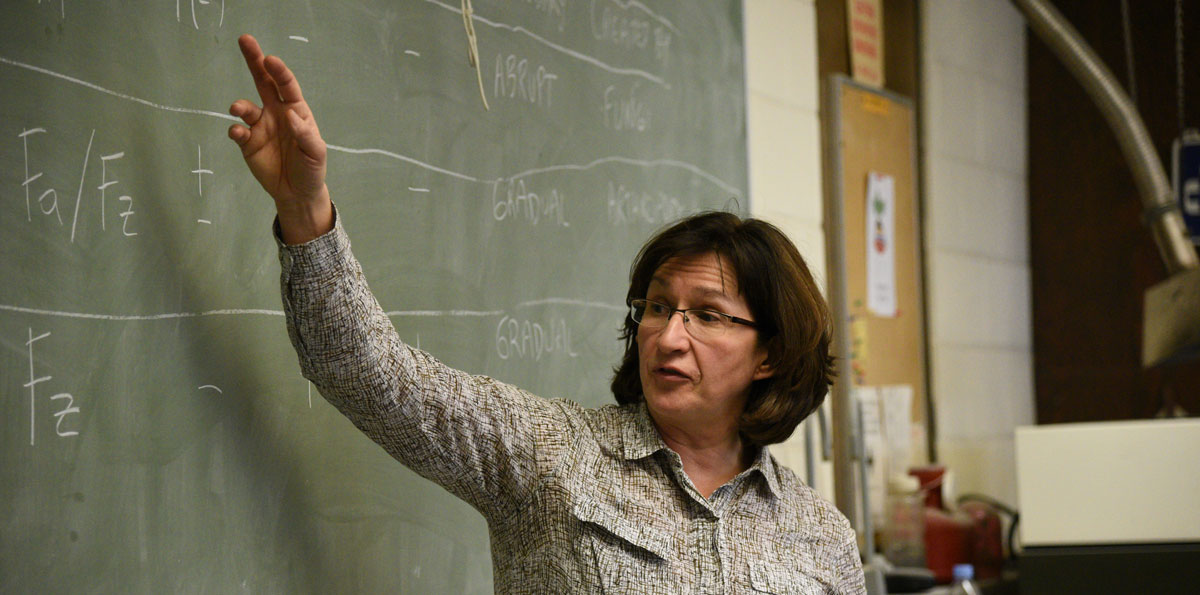“A lot of people in urban centres are aware of air quality, water quality. These are absolutely important issues, but so is soil,” said Maja Krzic, Associate Professor of Soil Science in the Faculty of Land and Food Systems and the Faculty of Forestry. “Somehow soil is not on the radar of the general public in urban centres and that needs to change.”
Dr. Krzic, who has practiced open for over 13 years, believes open education is an important tool in proving the relevance of soil science to the general public. Within the first year of her appointment at UBC Dr. Krzic applied for a Teaching and Learning Enhancement Fund (TLEF) to develop an open learning resource for one of her courses. SoilWeb, she envisioned, would be a web-based application that would improve teaching in her course on Introduction to Soil Science.
Over the years, that one project has grown into into 16 different open learning resources focused on soil science and led to establishment of the Virtual Soil Science Learning (VSSLR) Consortium. Fifteen UBC courses currently use the resource, with a total enrolment of 850 students per year. In addition, SoilWeb resources are also used in at least 17 non-UBC courses totaling roughly 800 students a year.
Dr. Krzic says she quickly realized the opportunities that lay behind the implementation of open learning resources in post-secondary education. “I am one of the few Canadian soil scientists that comes from a relatively large university and also from a university that has funding for innovation in teaching,” she said.
“The establishment of the VSSLR Consortium gave us opportunities to collaborate with soil scientists from other Canadian universities that don’t have grants such as TLEF or other provincial funding for innovations in teaching and development of open learning resources.” Today, the VSSLR initiative includes more than 30 soil scientists, undergraduate and graduate students, and multimedia developers from across Canada.
From the ground to web and mobile application
Earlier this year, Dr. Krzic and her team received another TLEF grant. For her next project she is using a mobile app to engage students in citizen science and create a soil map of the city of Vancouver.
“This newest project emerged from a Masters project of one of my former graduate students who wanted to do an assessment of community gardens in city of Vancouver. In order to be successful in that assessment you need a soil map but since there was no soil map of Vancouver, an initial version of soil map of Vancouver was developed and with a help of another TLEF grant received several years ago that map was transformed into a multimedia resource,” she explains.
With the mobile app, Dr. Krzic and her team hope to further enhance usability of the soil map of Vancouver by combining citizen science with self-guided learning activities for students. “The idea is to send students with the mobile app to different sites across Vancouver where they will be able to find, describe and identify the type of the rock (or parent material). Through the information that’s gathered by students using the app, we will also be able to improve the accuracy of our existing soil map of Vancouver.”
Dr. Krzic says the new project illustrates the role of technology in shaping change inside the classroom. “About 15 years ago, innovation was to have some course material on the web but development of information technology has opened new avenues for innovation in education.”
A changing demographic, an opportunity to branch out
According to Dr. Krzic, another change the discipline of soil science has seen is the type of people who study it. Soil science was traditionally taught in the faculties of agriculture and forestry, to students who, for the most part, came from rural settings. But ongoing urbanization is changing that. “You didn’t have to explain to students coming from rural backgrounds what’s the importance of soil,” she said. “But today a typical undergraduate student enrolling to soil science courses often times will not be aware of the importance of soil for food and fiber production or its other roles in global issues of climate change and biodiversity protection.”
This change coupled with an overall lack of awareness among the general public of the importance of soil is motivating instructors to find ways to make the discipline exciting to students coming to university. Despite the challenges, Dr. Krzic believes this is an opportunity to grab students’ attention. “If in today’s courses one continues to use only the traditional methods of teaching focused just on classroom-based lectures, you’re sending a message that your discipline is outdated and really boring, of relevance for maybe just a limited group of people.”
As someone who has worked in the field of soil science for over 30 years, Dr. Krzic believes that open education is not only as a useful tool to engage students in her courses, but also a means to prove the discipline’s relevance to the general public. “As soil scientists we know what are the important roles played by soil in food security, prevention of natural resource degradation and environmental protection as well as climate change. These are all issues where soil plays a central role, and somehow because soil is not on the radar of the general public in these urban centres, it’s very often overlooked,” she added.
Dr. Krzic hopes that projects like the mobile app will help bridge that knowledge gap and get the general public involved in issues around soil science too. Soil scientists are realizing that open learning resources are good avenues for communicating the discipline’s relevance, she argues. “If we don’t evolve, if we don’t try to do new things, we are trapped in how our discipline is taught and regarded. So I am hopeful that [open education] will continue to grow in popularity and use in my discipline.”
